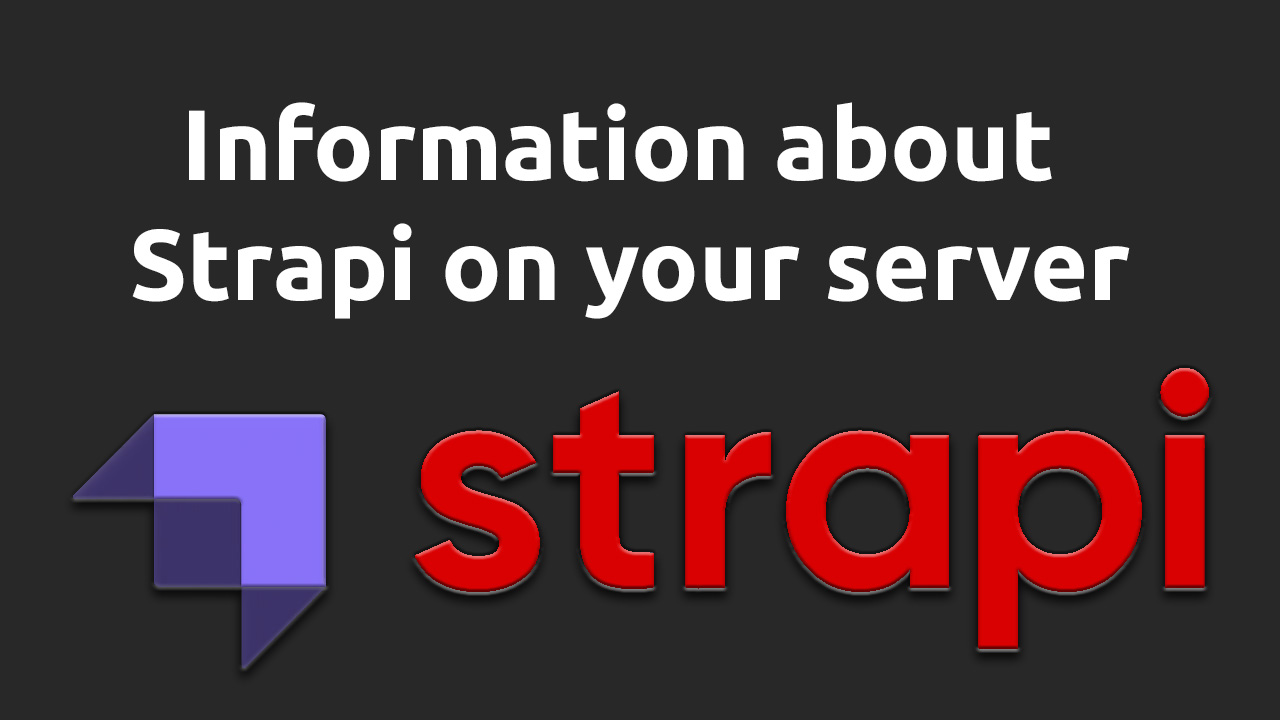Information about strapi on your server

Today we will talk about another CMS called Strapi. We will discuss what pros and cons it has, what it is capable of, in what language it is written and where it is used. And also we will analyze the method of installing this CMS on your server.
What is Strapi?
Strapi is an open source CMS that provides an admin panel, backend, API for your application. It allows you to save on backend specialists because it allows you to connect a content management system.
It appeared back in 2015, it was written in JS and is expanding very quickly, adding new functions and much more.
What is it capable of?
Individuals and organizations can use CMS, for modification, administration, etc. in a single interface without special skills.
For example, WordPress and Drupal are two examples of traditional CMS that combine the interface and the server part of the application code base. But sometimes this is not enough for you or your developers and you may need something more. For example, a system for creating web applications with access to content via the API and simultaneous management. And it is this big one that is our headless CMS that we are talking about today. It will allow you and your team to manage and create content, as well as access it in all applications using the API.
That is, this CMS has the following advantages over its older brothers:
- There will be no need to develop outdated software.
- Easily manage materials on multiple platforms.
- Extensions and scalability.
A little below we will look in more detail at the pros and cons of this headless CMS.
Advantages and disadvantages
Advantages
- Open source code
Due to the fact that its code is open, the community can contribute to the development of this CMS. - Completely free
Open source also means that it was and will be completely free. - One language
Since the JS language is used, you can work on it both in the CMS and in the frontend - Cross-platform
Allows you to exchange data using any programming language. To do this, it will be enough to use the API - Convenience
It includes support for plugins and various tools, which greatly simplifies the work and makes this CMS more convenient to use.
Disadvantages
- Limiting database migration
Unfortunately, using Strapi you will have to perform database migration yourself. - Frequent updates
Although updates are good because they include getting rid of critical errors, in any case it can turn out to be a very bad feature. After all, some of these updates contain critical changes, which makes it difficult to update the production system without comprehensive end-to-end testing. - There is no preview
Unfortunately, in this excellent CMS there is no possibility of previewing what you will do with the page. You will have to create content, save it, and only then will you be able to see how he modified the page.
When is it applied?
Strapi can be used for almost any purpose, be it a blog or an online store. In principle, the potential of this CMS is limitless, but there are some limitations, for example, it will not be possible to use it on a virtual host. That is, you will not be able to place Strapi on Wordpress, but as for VPS, then you just need to install everything you need before installing Strapi and then there are no restrictions.
To get started, you will need a server on which you can host this CMS and start configuring and installing it.
Installation method
But how to install this CMS, we will tell you with pleasure. You can just watch our video on the YouTube channel, where we have sorted out the installation method.
Conclusion
Strapi is a CMS for which the future is and in which users will be able to easily change content and work for fun using various plugins and tools. Although there are minuses in it, there are much more pluses, which makes it possible to consider this CMS very convenient to use and switch to it.

